Christian Heritage of Córdoba, Spain
I've been spending more time traveling than writing about my experiences, so I have several posts and trips overdue. Before hitting the road again, I should publish at least some bits of my archive. I'll kick it off with this brief photo report from Córdoba, which I visited for a New Year's trip in late December. As I've mentioned, the former capital of the Umayyad Caliphate of Córdoba in Al-Andalus was a melting pot of cultures and religions for centuries. This is exemplified by the world-unique Mosque-Cathedral and the adjacent Jewish Quarter, both renowned architectural gems. Now, it's time to explore some of the Christian landmarks and footprints, as the Catholic Monarchs evidently took the spreading of Christianity into the reconquered territories seriously.
Poslední dobou trávím více času na cestách než psaním o svých zážitcích. A tak jsem několik výletů pozadu. Je nejvyšší čas to napravit, protože už za týden opět vyrážíme, tentokrát do Itálie. O Córdobě už jsem dvakrát psal, je to krásné město, ve kterém se prolínají tři náboženství a jejich tradice. Vzal jsem vás do jedné z největších mešit své doby, ze které se stala katedrála. Provedl jsem vás židovským městem a muzeem. A teď je čas na křesťanské stopy, kterých je samozřejmě v Córdobě nejvíc. Katolická veličenstva za to vzala po znovudobytí regionu pořádně zhurta.
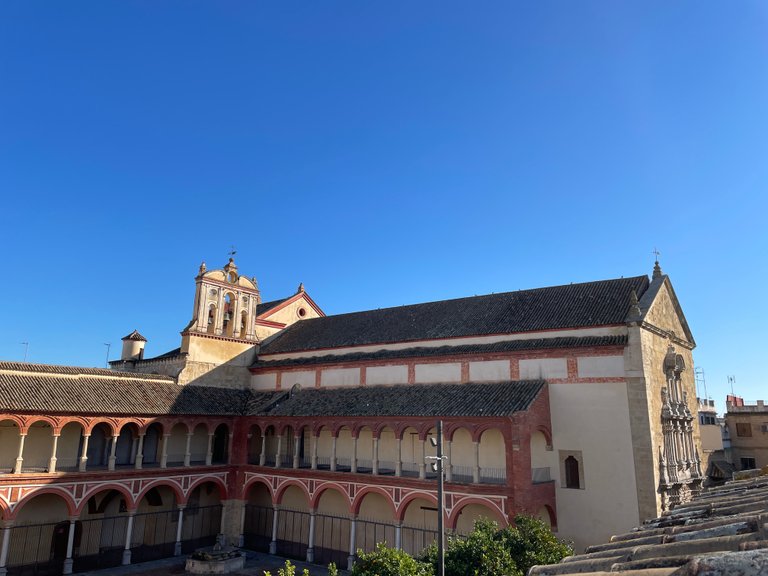
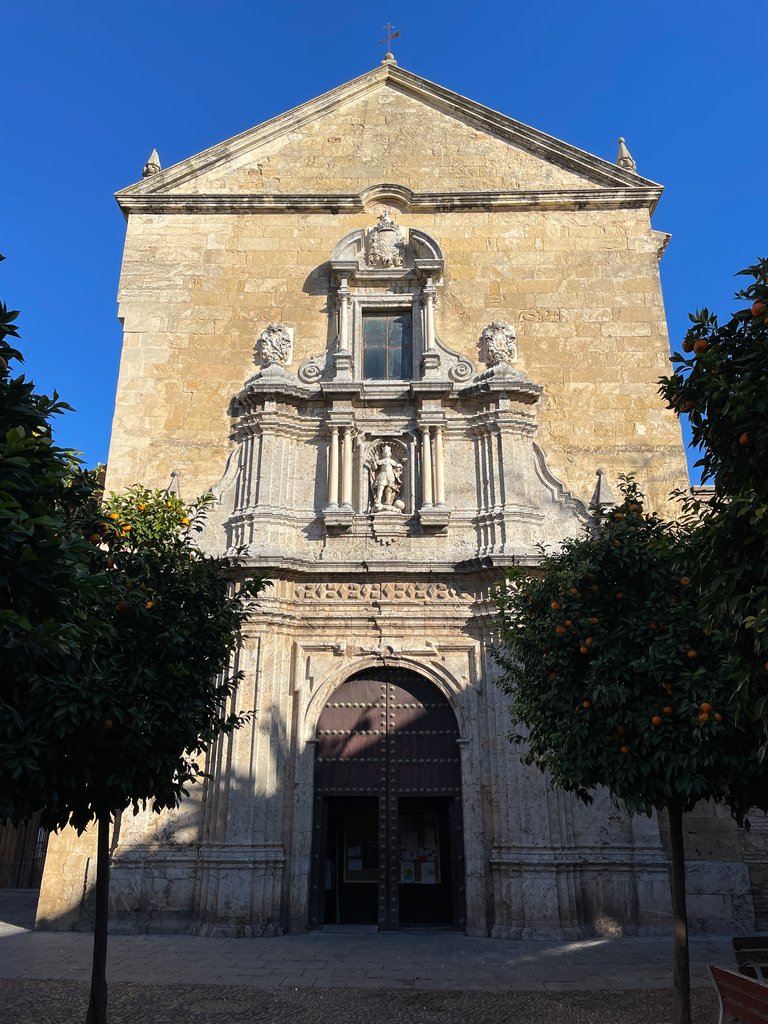
Let's start with the Church of San Francisco and San Eulogio, just around the corner from our hotel. Entrance is paid during the day (though included in the Mosque-Cathedral fare), but nobody checks tickets in the evenings. Founded by King Fernando III himself in the 13th century as San Pedro el Real, the church belonged to a Franciscan monastery. While there isn't much left of its original medieval appearance inside, as the church underwent extensive reconstruction in the 18th century, it still hosts a fine collection of Córdoba-based artists. It also boasts an astonishing main altar. And since it was the season, we could feast our eyes on the elaborate nativity scene.
Začneme v kostele Sv. Františka a Eulogia, protože byl hned za rohem od našeho hotelu. Formálně se tu vybírá vstupné (které je mimo jiné zahrnuto ve vstupence do Mešity-katedrály), ale večer už tu návštěvníky nikdo nekontroluje. Kostel založil Fernando III. ve 13 století. Tehdy se jmenoval San Pedro el Real a byl přidělen Františkánům, kteří si vedle postavili klášter. Uvnitř na vás středověká atmosféra rozhodně nedýchne, protože kostel prošel v 18. století rozsáhlou barokní rekonstrukcí. Ale je tu celkem známá sbírka obrazů a soch místních umělců. Taky majestátní oltář stojí za to. A během Vánoc je tu pochopitelně rozsáhlý Betlém.
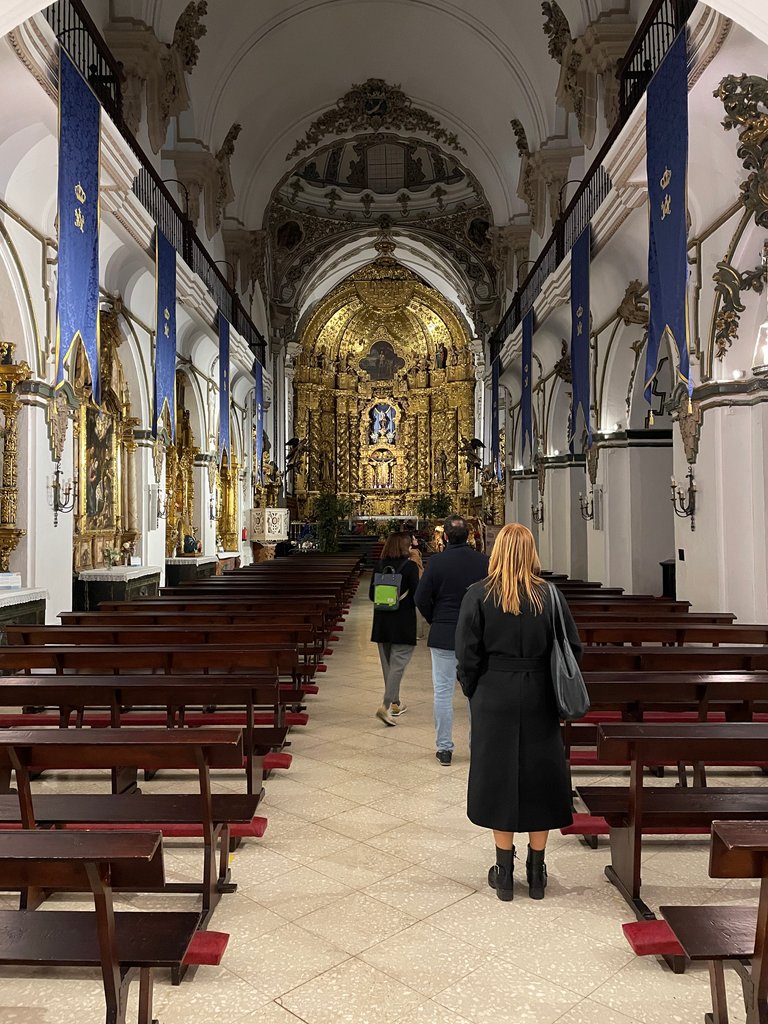


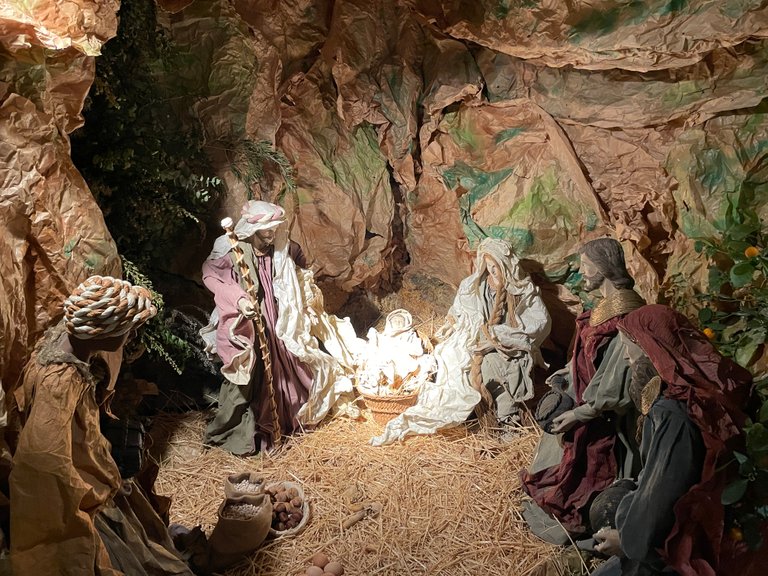


The surroundings of the former monastery showcase some of the traditional-style tile portraits of saints and Jesus. Surprisingly, similar pieces have been used for advertising for centuries, and sometimes you have to come close to discern whether you're looking at a tavern or artisan workshop signboard or a homage to a saint.
V okolí kostela je na první pohled patrné, že jste vedle kláštera. Zdi tu zdobí typické kachličkové portréty světců a Ježíše. Ale protože stejný typ dekorací začali už před několika stoletími využívat i obchodníci nebo hostinští, občas je třeba podívat se zblízka, abyste odlišili ikonu od reklamy.

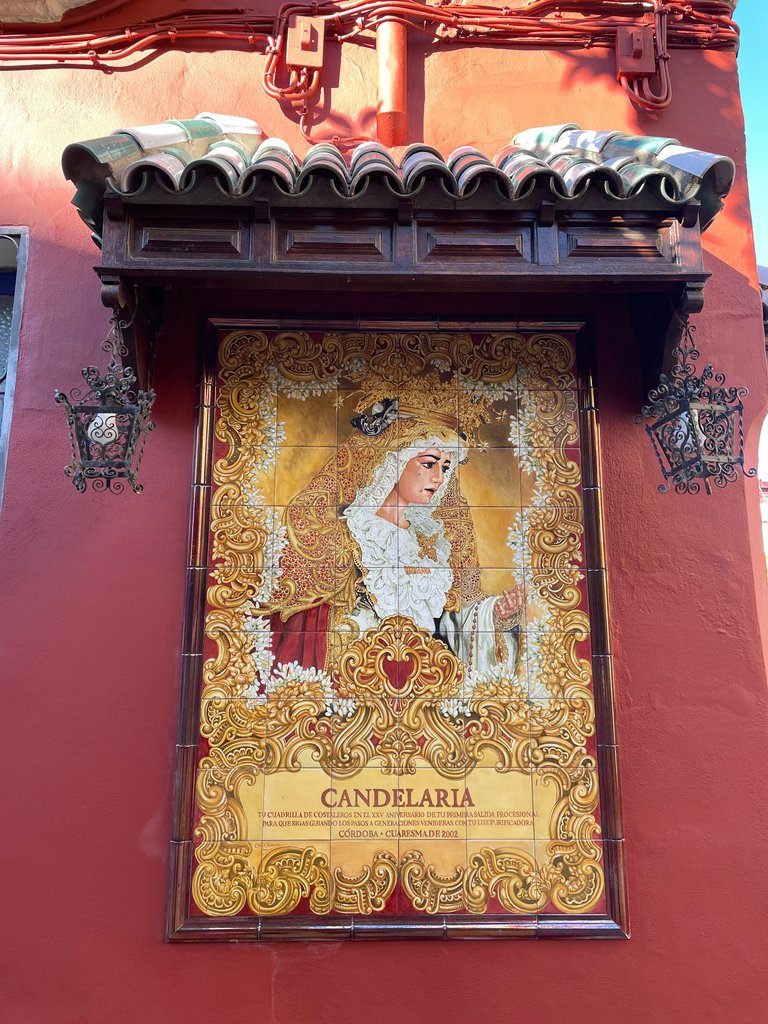
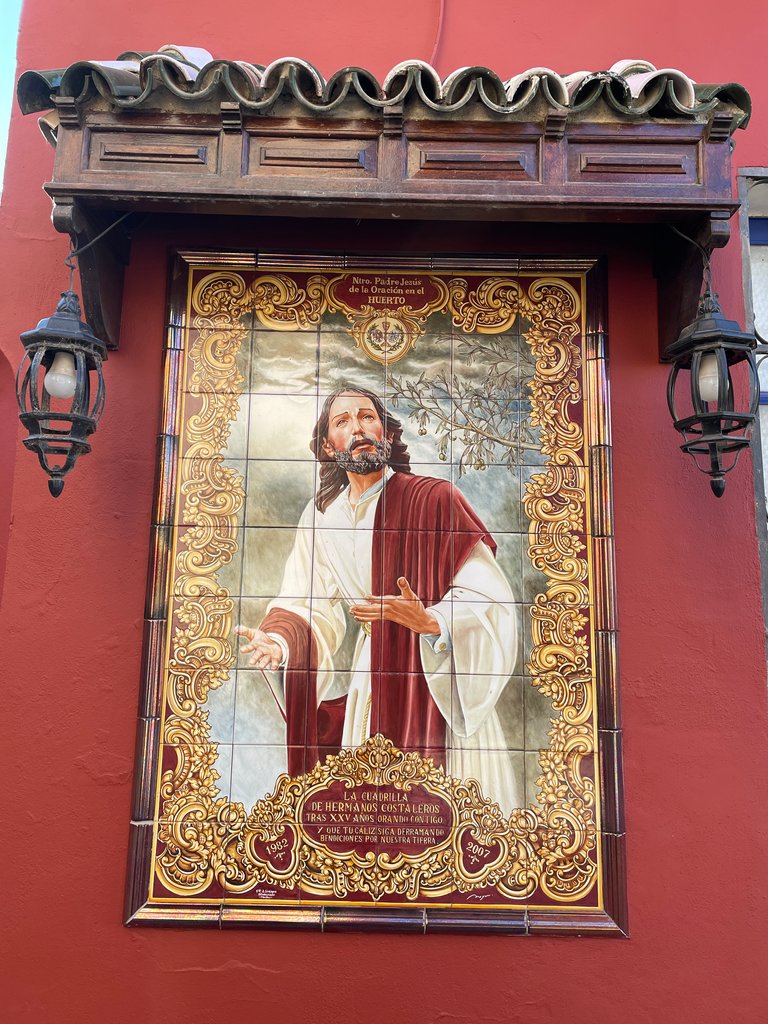
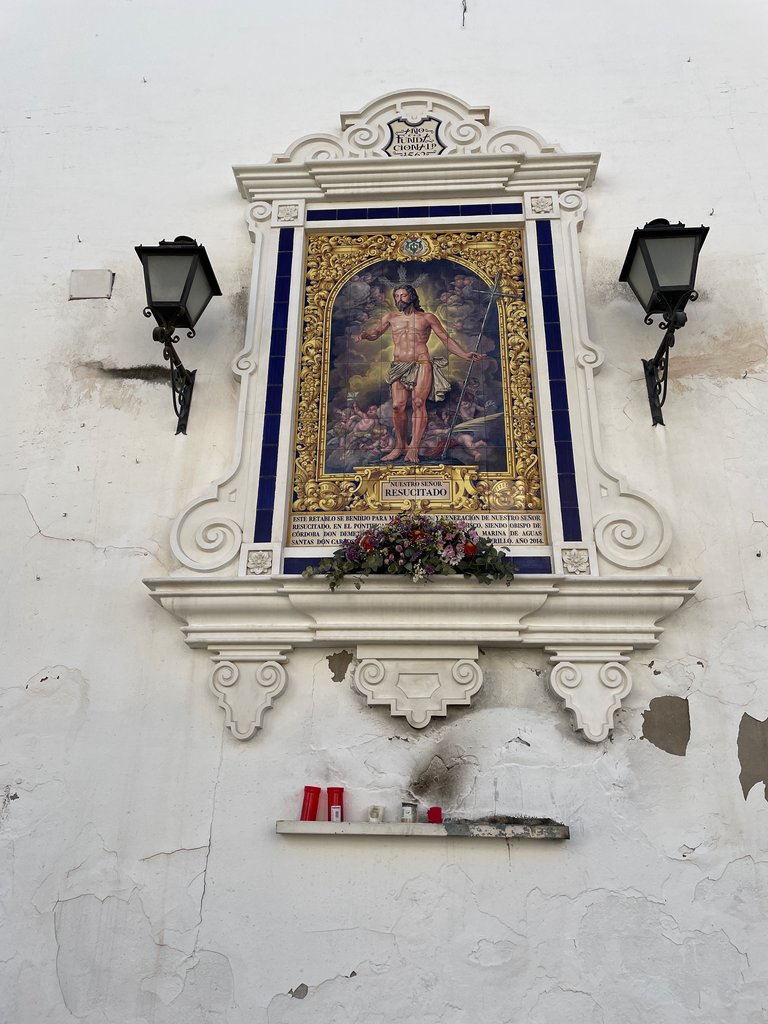


This last signboard shows a lot of self-confidence – most innkeepers would simply have a blackboard to write on. Yet when you know you cook your favorite tapas exceptionally well, why not have them tiled to the wall for 50 years? But let's return to Christian landmarks, shall we? This is the Convent of Santa Ana, founded by the Saint John of the Cross in 1589. It still serves as an active convent inhabited by several nuns. Alas, it is not open to the public.
Tahle vývěsní tabule mě pobavila nejvíc. Musíte mít dost sebevědomí, abyste své menu nechali vydlaždičkovat na zeď. Ale asi tu vědí, že mají skvělé tapas, a tak si můžou dovolit namísto tabule, na kterou se dá psát, sáhnout rovnou po kachličkách. Ale pojďme zpátky k hlavnímu tématu. Tohle je konvent Svaté Anny, který založil Sv. Jan od Kříže v roce 1589. Klášter stále funguje, žije v něm několik jeptišek. Možná i proto není přístupný.

A bit further from the very city center of Córdoba is the Royal Church of Santa Marina de Aguas Santas. Founded by Fernando III in the 13th century, it replaced a minor mosque, which had replaced an old Visigoth church from the 7th century. The church combines proto-Gothic and Mudéjar styles. As one of the most distinct landmarks of the city, Santa Marina lends its name to the surrounding district, also known as the bullfighters' neighborhood. Rumor has it you can trace bullhorn carvings in the facade. However, due to its reconstruction, we couldn’t fact-check that.
Kousek dál od centra je Královský kostel Sv. Mariny od Aguas Santas. I ten založil král Fernando III. ve 13. století. Předtím tu stála menší mešita a ještě před ní vizigótský kostelík ze 7. století. Stávající kostel kombinuje raně gotický a mudejarský sloh. Jako jedna z nejvýznamnějších památek dal kostel jméno celé čtvrti, které se jinak přezdívá Čtvrť toreadorů. A když jsme u toho, fasáda kostela je prý poničená býčími rohy. Jestli je to pravda, jsme bohužel nezjistili, zrovna ji opravovali.
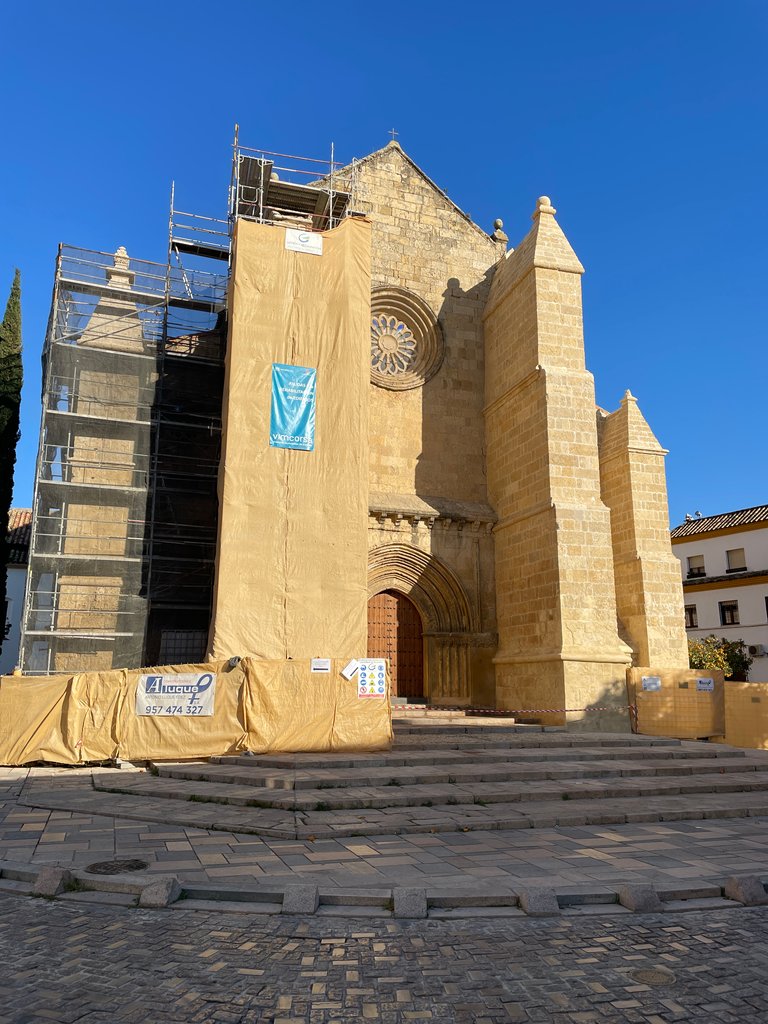

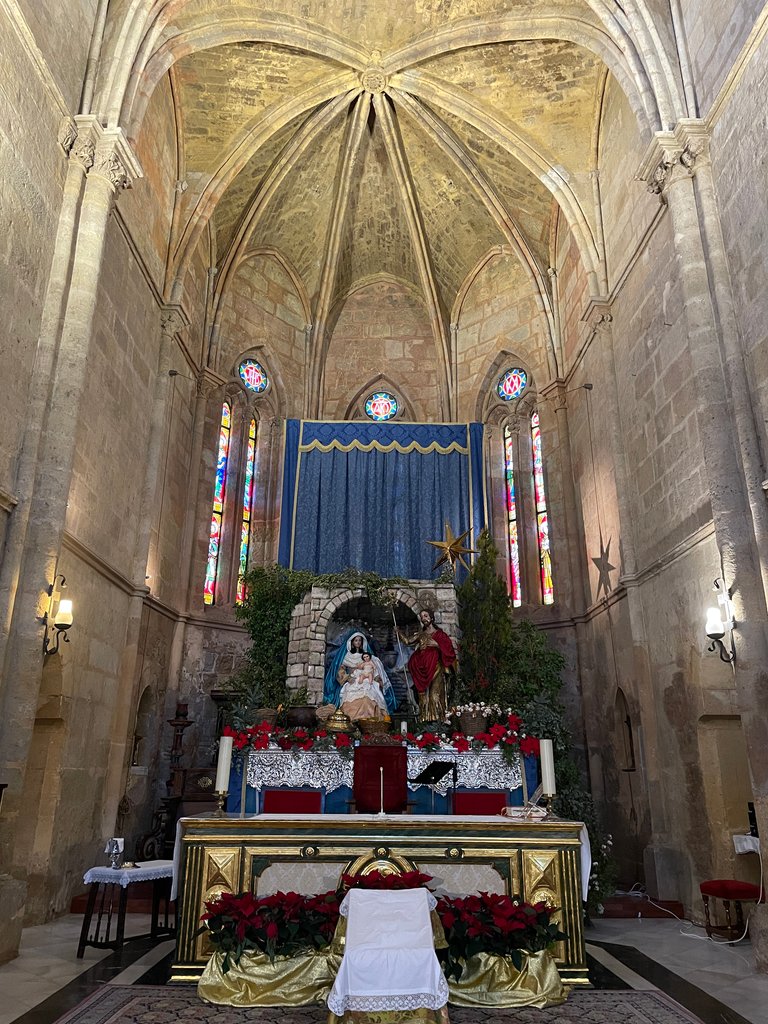

Christianity isn't just about old churches – Santa Claus, a modern figure emerging from a blend of Christian traditions, has also conquered Spain. Despite the tradition of gifts being brought on January 6 by the Three Wise Men, Santa Claus is omnipresent around Christmas. You'll even find him towering over the typical fairs, like in our case.
Křesťanství není jen o starých kostelech a ikonách svatých. I takový Santa Klaus má kořeny v různých křesťanských tradicích. A daří se mu i ve Španělsku. Přestože tam dárky nosí až 6. ledna Tři králové, kolem Vánoc tu na opláceného dědu v červeném narazíte prakticky všude. I na typických poutích, třeba i té v Córdobě.
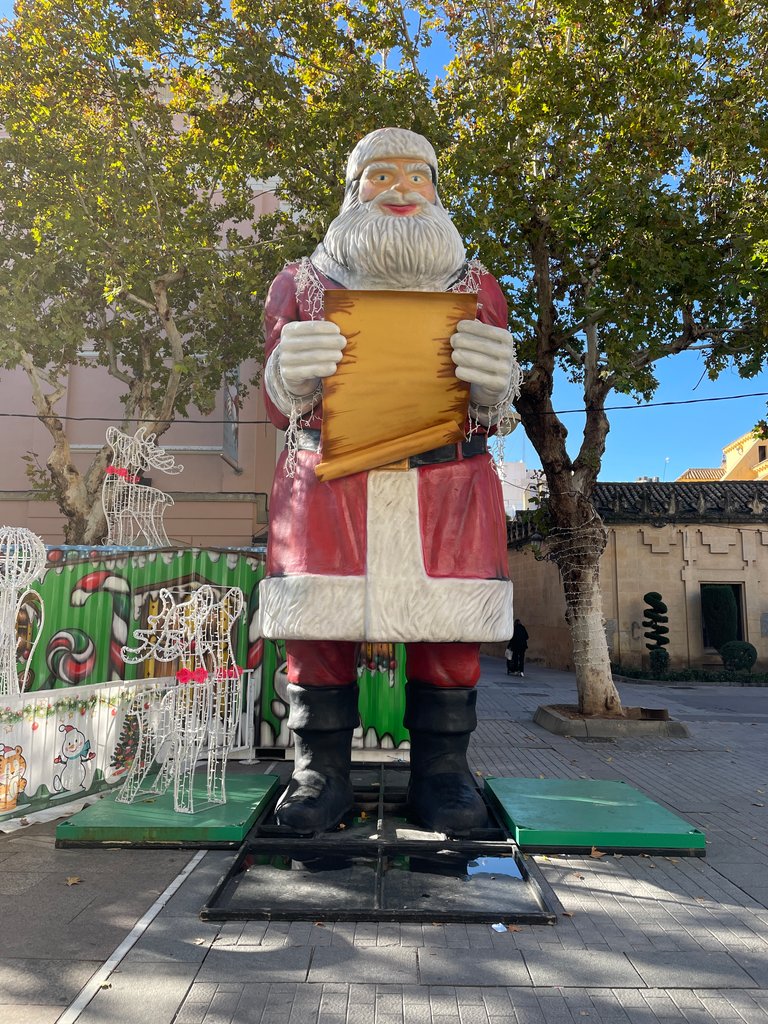
Congratulations, your post has been added to Pinmapple! 🎉🥳🍍
Did you know you have your own profile map?
And every post has their own map too!
Want to have your post on the map too?
https://inleo.io/threads/godfish/re-godfish-2algpofbl
The rewards earned on this comment will go directly to the people ( godfish ) sharing the post on LeoThreads,LikeTu,dBuzz.
The golden retalbo is magnificent. I shoot a lot of churches years ago maybe it's time to visit one again.
Depends on which church you visit :) Those are exaples of Catholic exuberance. Not really universal style, though.
Super beautiful photos! The beauty of architecture.
Wow friend, very beautiful publication!! Greetings 💯
Hiya, @lizanomadsoul here, just swinging by to let you know that this post made it into our Honorable Mentions in Travel Digest #2159.
Your post has been manually curated by the @pinmapple team. If you like what we're doing, please drop by to check out all the rest of today's great posts and consider supporting other authors like yourself and us so we can keep the project going!
Become part of our travel community:
Thanks :)
Hello. Congratulations. Beautiful places with very interesting architecture. Best regards from Cuba.
When we were on our road trip to Portugal, we went through Andalucia but didn't have time to visit Cordoba, which is a pity... But those saints portrait OUTSIDE the church is something that I saw only in Andalucia, and I remember well the streets of Cadiz where we found them too...
As you were there in December, you had the best time to take photos and everything was prettier because of Christmas...
Thanks for sharing! Now I know where we should go for the next vacation... 😃
I have picked this post on behalf of the @OurPick project! Check out our Reading Suggestions Posts!
Please consider voting for our Liotes HIVE Witness. Thank you!
Yes, the tile decorations are quite typical for the south of Spain :) The European Mediterranean region is generally very religious and people tend to show off in that way. Italy, Greece, Cyprus, Malta... You'd meet something like that everywhere.
I appreciated the shift from depicting religious motives exclusively to marketing, though :)
Thanks for picking the post!
Nice architecture!!!
Congratulations @godfish! You received a personal badge!
Thank you for participating in the Leo challenge.
You can view your badges on your board and compare yourself to others in the Ranking
Thanks :)